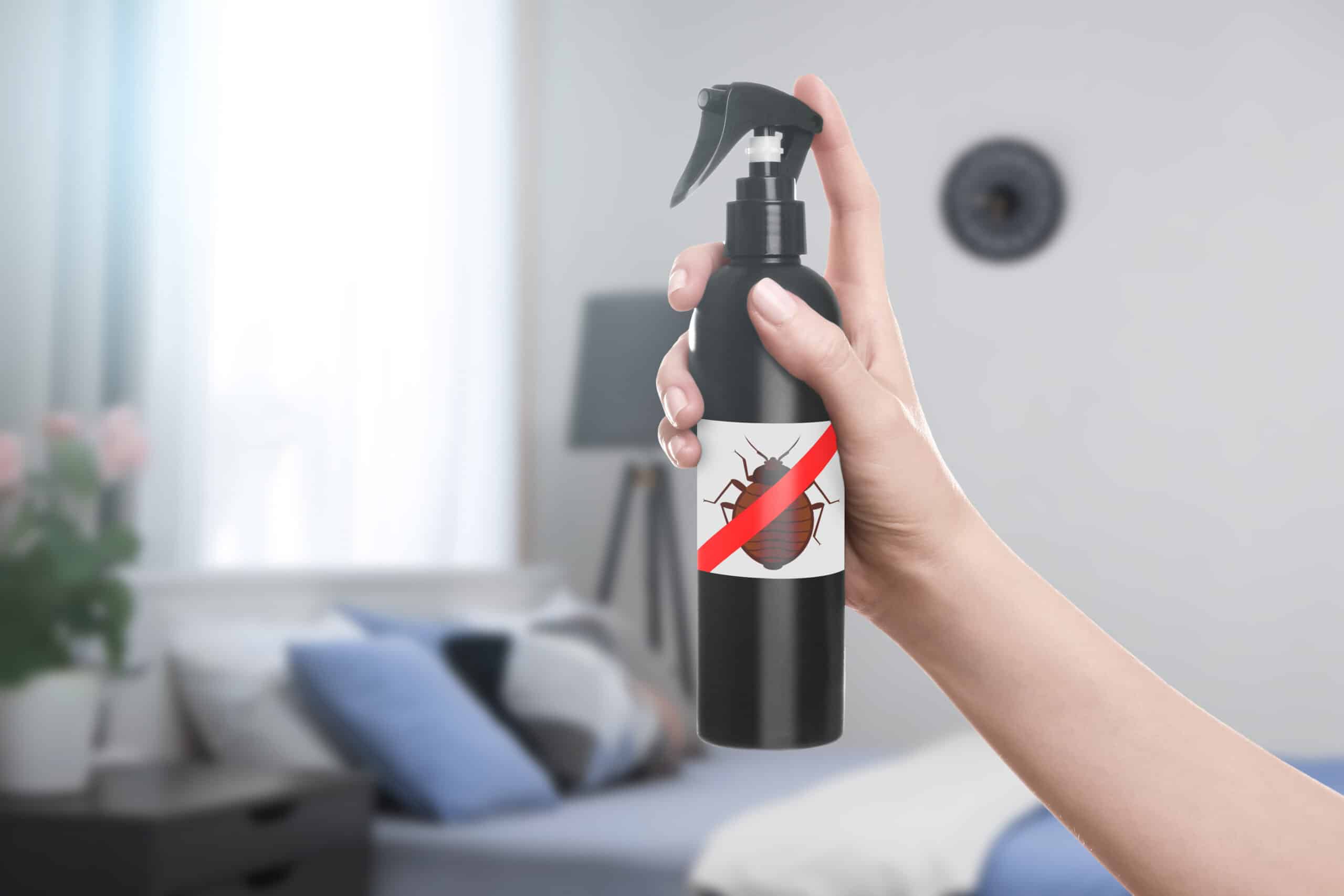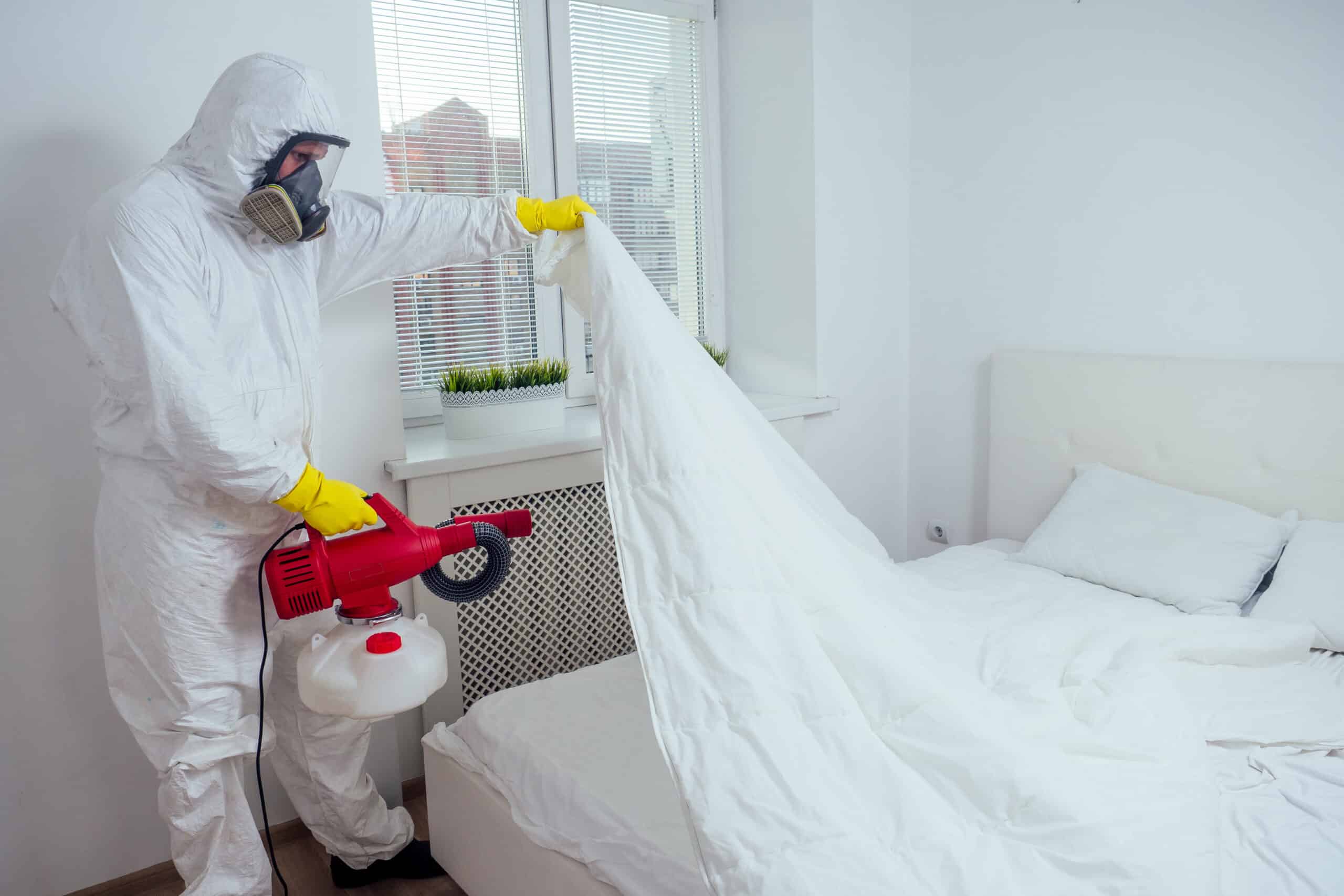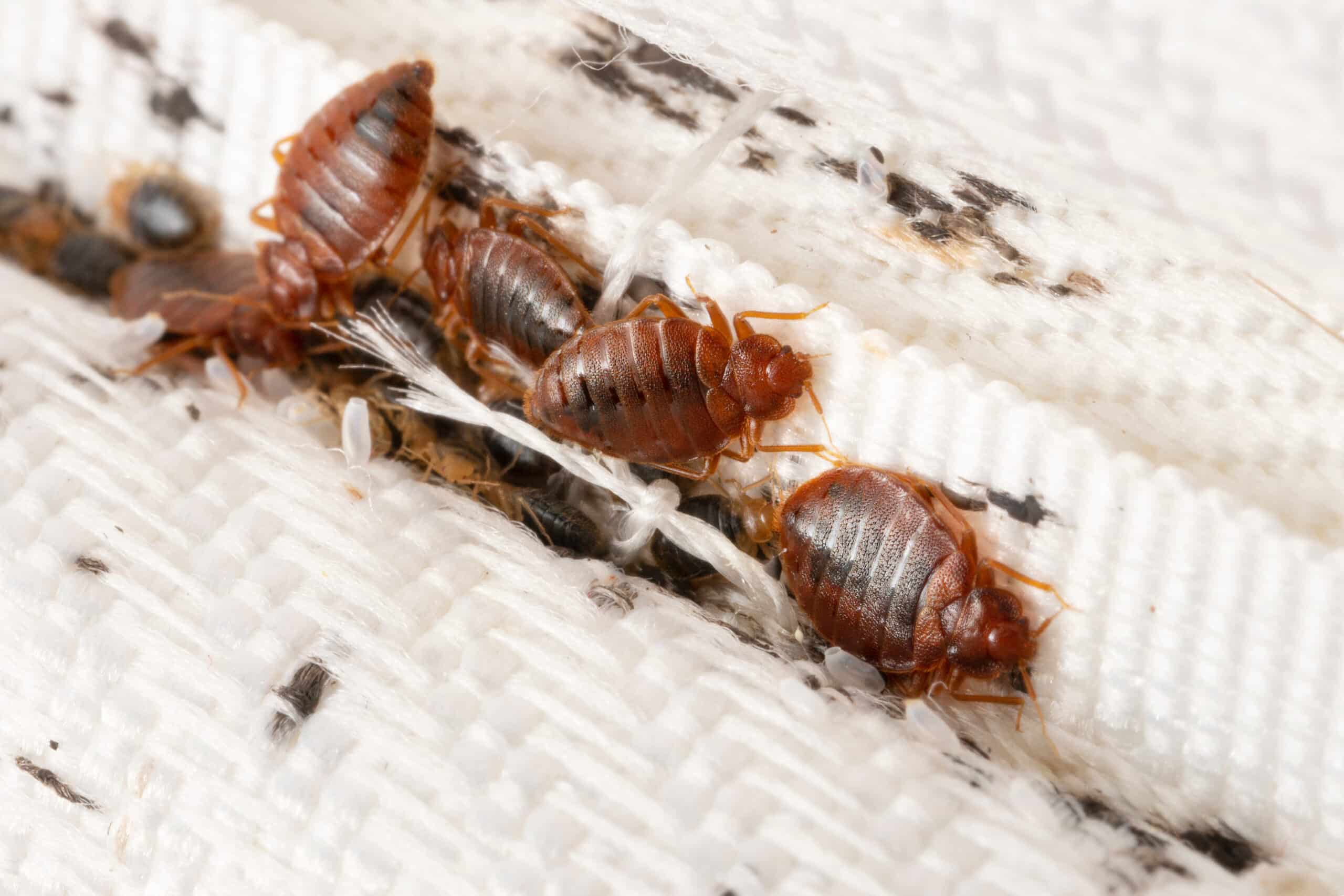Having a bed bug infestation is annoying and uncomfortable. You wake up with tiny, red, and itchy bumps on your skin that seem to appear out of nowhere.
These tiny pests can also make you dread having guests over. Who wants the embarrassment or explanations?
And to make matters worse, bed bugs are excellent at hiding in tiny cracks and crevices, making them incredibly difficult to eliminate permanently. You can turn your room upside down today to treat these bloodsuckers, only to have them reappear the next day.
So, below, we’ll walk you through how to get rid of bed bugs in proven steps.
What Are Bed Bugs?
Bed bugs are reddish-brown, flat insects that feed on human blood. They’re about the size of apple seeds and don’t carry any known diseases. However, their bites can be itchy and cause skin irritation in some people.
The favorite spots for bed bugs are areas where we sleep or rest, such as beds, sofas, and chairs. However, you can also find them in other areas of the home or building, such as behind baseboards, wall voids, carpets, and electrical outlets.
A bed bug infestation doesn’t mean the place is unhygienic—it’s one of the several myths about bed bugs. Bed bugs are excellent hitchhikers and can easily be transported from one place to another via clothing, luggage, or other personal belongings.
How to Get Rid of Bed Bugs Permanently: A Step-By-Step Guide
Getting rid of bed bugs is a process that takes effort and persistence. You might need to repeat some steps for a few weeks to eliminate the blood-sucking insects completely.
Here are the most practical and effective steps to achieve a bed bug-free space.
1. Conduct a Bed Bug Inspection
If you wake up with red bumps and suspect that bed bugs may be the cause, conducting an inspection will help to confirm their presence.
You should also carefully analyze whether the pests you find are bed bugs. It’s easy to mistake several household pests (like baby cockroaches, carpet beetles, ticks, spider beetles, and bat bugs) for bed bugs.
If you’re unsure about the household pest you’re dealing with, you can take a sample to experts or request a professional bed bug inspection.
Here’s what you should look out for when conducting a bed bug inspection:
- Live or dead bed bugs (oval in shape)
- Rust-colored droppings
- Empty skins
- Small pale yellow eggs
- Reddish stains on beddings
2. Identify All the Bed Bug Infested Areas
Where do you look? Most bed bugs will be within five feet of the bed, but you can also find them in other rooms. Here are the areas you should examine carefully:
- Bedding, including the mattress, box spring, and pillows
- Underneath wall paintings, posters, and other decorations
- Closets, nightstands, and dresser drawers
- Along seams of carpets and cushions
- Any dark cracks within your bed
- Inside electrical outlets
- Furniture joints
This process can be time-consuming but crucial. You’ll know which areas of your home to treat and the extent of the infestation. As a result, you can create an effective bed bug treatment plan.
Use a bright flashlight to inspect cracks and crevices where bed bugs may hide. Crush or vacuum any bed bugs you come across in the process. If you need help, hire a pest control professional to carry out a pest inspection.
3. Declutter and Clean
Decluttering the infested room will make detecting and treating bed bugs easier. Remove unnecessary items, such as old magazines, newspapers, and cardboard boxes. Bed bugs can hide in such materials.
Once you’ve removed the clutter, wash all infested linen, clothing, carpet, and personal items in hot water. Bed bugs cannot survive in temperatures above 120 degrees, so use the hottest setting on your washing machine. Dry your items on the hottest setting as well.
Place the items you can’t wash, such as books or electronics, in a sealed plastic bag without air holes to avoid spreading the pests.
4. Vacuum Everything
Simply use a vacuum cleaner to suck up the bed bugs and their eggs from mattresses, carpets, furniture, and other areas where they may be hiding. You can use a crevice tool to reach into cracks, small spaces, and crevices where bed bugs may hide.
Request A Free No-Obligation Quote Today
We serve Dakota, Hennepin, Ramsey, Washington, and Anoka Counties.
We also serve Carver, Scott, Rice, Lesueur, and Steele
Some of the areas to pay attention to include the following:
- All surfaces of your mattress and box springs
- Inside and under drawers of furniture
- Underneath loose wallpapers
- Cracks and folds in upholstered furniture
After vacuuming:
- Remove the vacuum bag or debris container, put the contents into a plastic bag, and seal it.
- Dispose of the sealed bag appropriately.
- Wash the debris container and vacuum brush attachment with hot water and detergent, then store the parts in large plastic garbage bags.
- Use Steam or Heat Treatment
One of the best tips on how to get rid of bed bugs fast is to use heat treatment. Heat is a non-toxic and effective bug killer that works on all bed bug life stages.
You can use heat treatment in different ways, for instance:
- Steam (for carpets, furniture, baseboards, etc.)
- Hot dryers and portable heat chambers (for infested personal items)
Bed bugs will generally die in 20 minutes if exposed to 118°F and 90 minutes if exposed to 113°F. The only downside to heat treatment is that it doesn’t leave any residual activity, and bed bugs can return soon. That’s why you must use it as part of the process, not a stand-alone treatment for bed bugs.
5. Treat the Infested Area With Insecticides

The most important factor in this step is to search for insecticides that are marked for use on bed bugs. So ensure you read the product’s label and follow its instructions for safe use.
Here’s what to look out for on an insecticide label:
- Has bed bugs on the list of pests it helps to control
- Designed for indoor use
- It has clear instructions for the use
Most people think insecticides are sufficient to kill bugs, but that’s not the case. While this is an important step in a bed bug control strategy, you need to combine it with other strategies in this guide.
6. Assess the Effectiveness of the Bed Bug Treatment
Bed bug treatment requires patience and persistence when doing it yourself. After following the steps outlined in this guide, the bed bug count should reduce significantly.
However, to completely eliminate bed bugs, you should repeat the steps several times over the next few weeks. Don’t let that discourage you! Bed bugs are notoriously difficult to remove. But eventually, they’ll be gone if you keep up with the bed bug control measures outlined in this guide.
7. Hire Pest Control Experts

Struggling to get rid of bed bugs after several attempts? It’s time to stop scratching your head on how to get rid of bed bugs at home and hire professional pest control experts.
Pest control professionals have the experience, knowledge, and tools to effectively and safely eradicate bed bugs from your home. They can conduct a thorough inspection, identify the extent of the infestation, and develop a treatment plan tailored to your specific needs/situation.
The experts can also offer advice and guidance on preventing future bed bug infestations.
How to Prevent Bed Bugs
Once you’ve kicked out the unwanted guests, you should take several measures to ensure they don’t return.
Here are a few tips on how to do so:
- Inspect second-hand furniture before bringing it into your home
- Use protective covers on mattresses and box springs
- Reduce the clutter in your home
- Avoid placing luggage on the floor or bed in hotels
- Vacuum frequently and dispose of the vacuum bag or contents immediately
- Wash and dry bedding, clothing, and other similar items in the highest heat setting
- Seal cracks and crevices in walls and floors
Conclusion
Learning how to get rid of bed bugs can help you regain your peace of mind and enjoy a bed bug-free environment. However, you might not eliminate bed bugs completely in one or two attempts.
It’s best to hire experts to save yourself the headache and time. If you’re in the Twin Cities area and surrounding suburbs, look no further than Environmental Pest Management. We offer pest control services for residential, commercial, and multi-family services and TAP insulation.
Contact us now for a free inspection and estimate.

